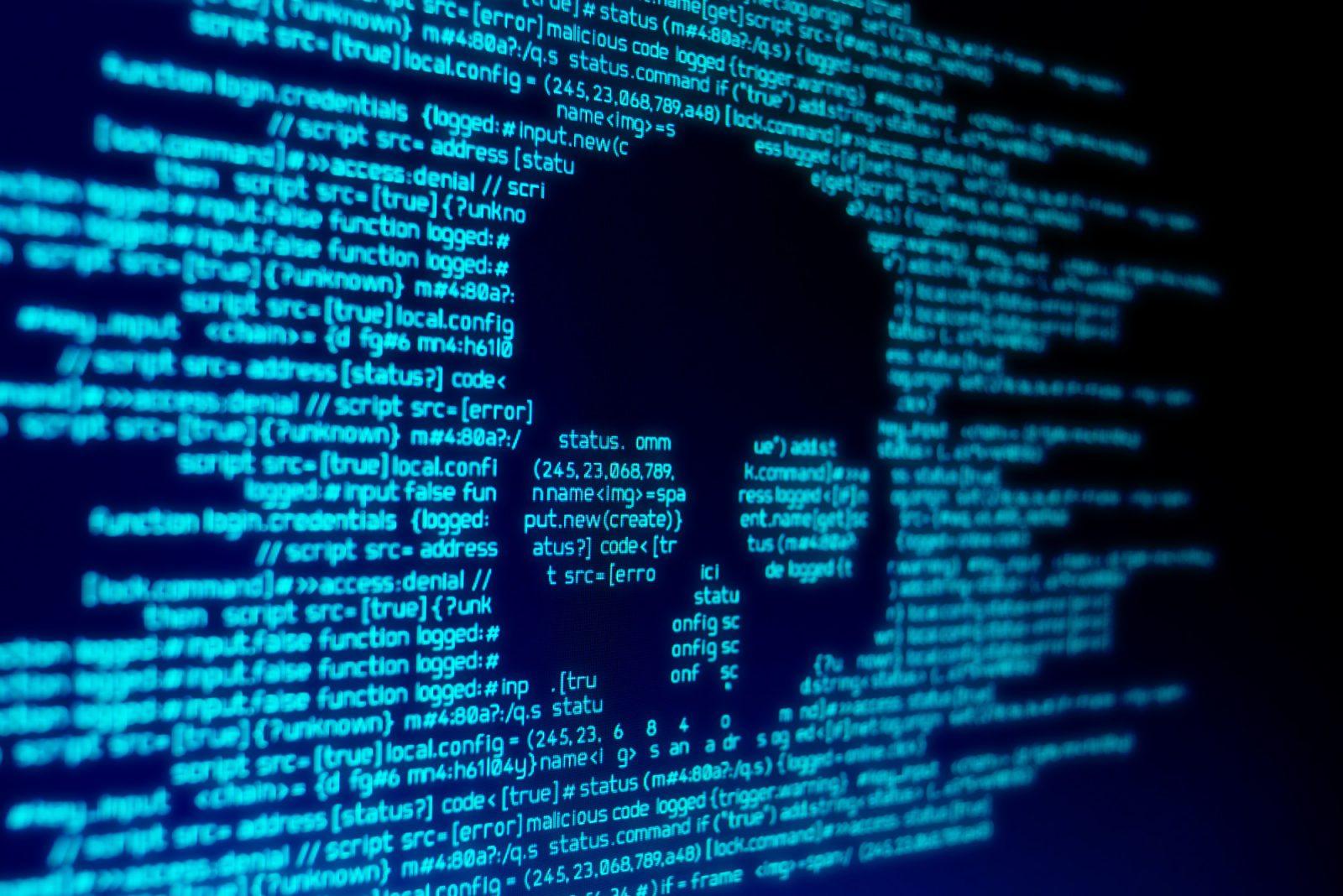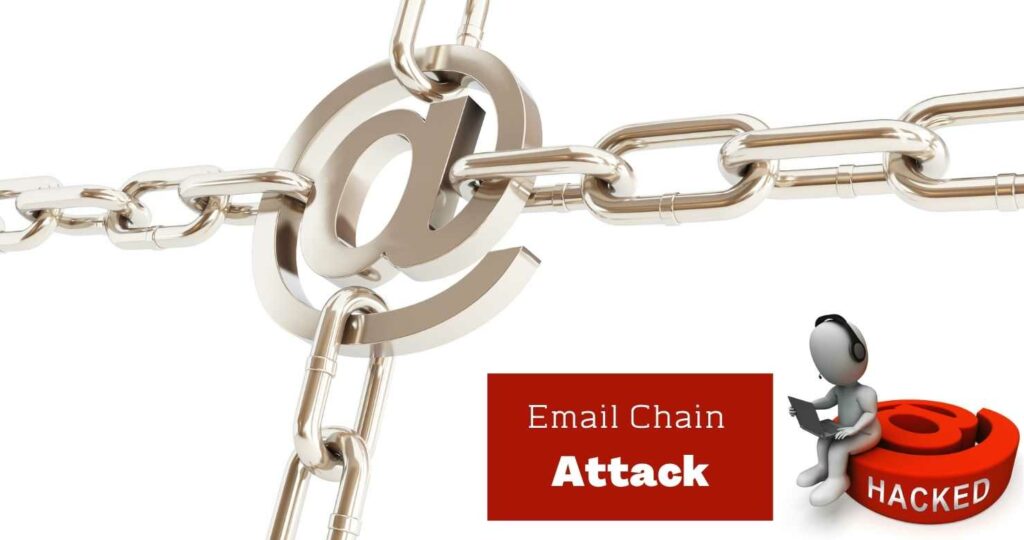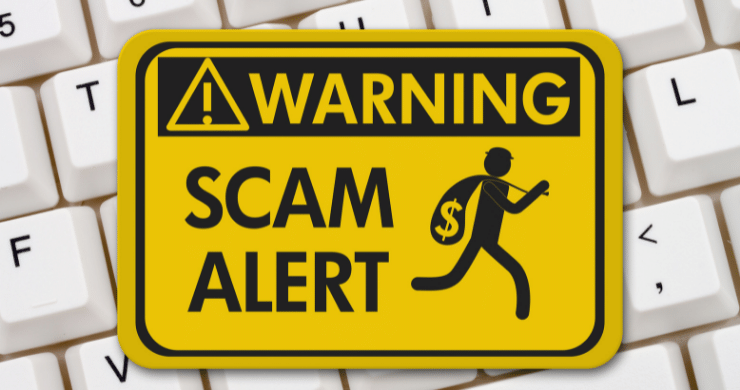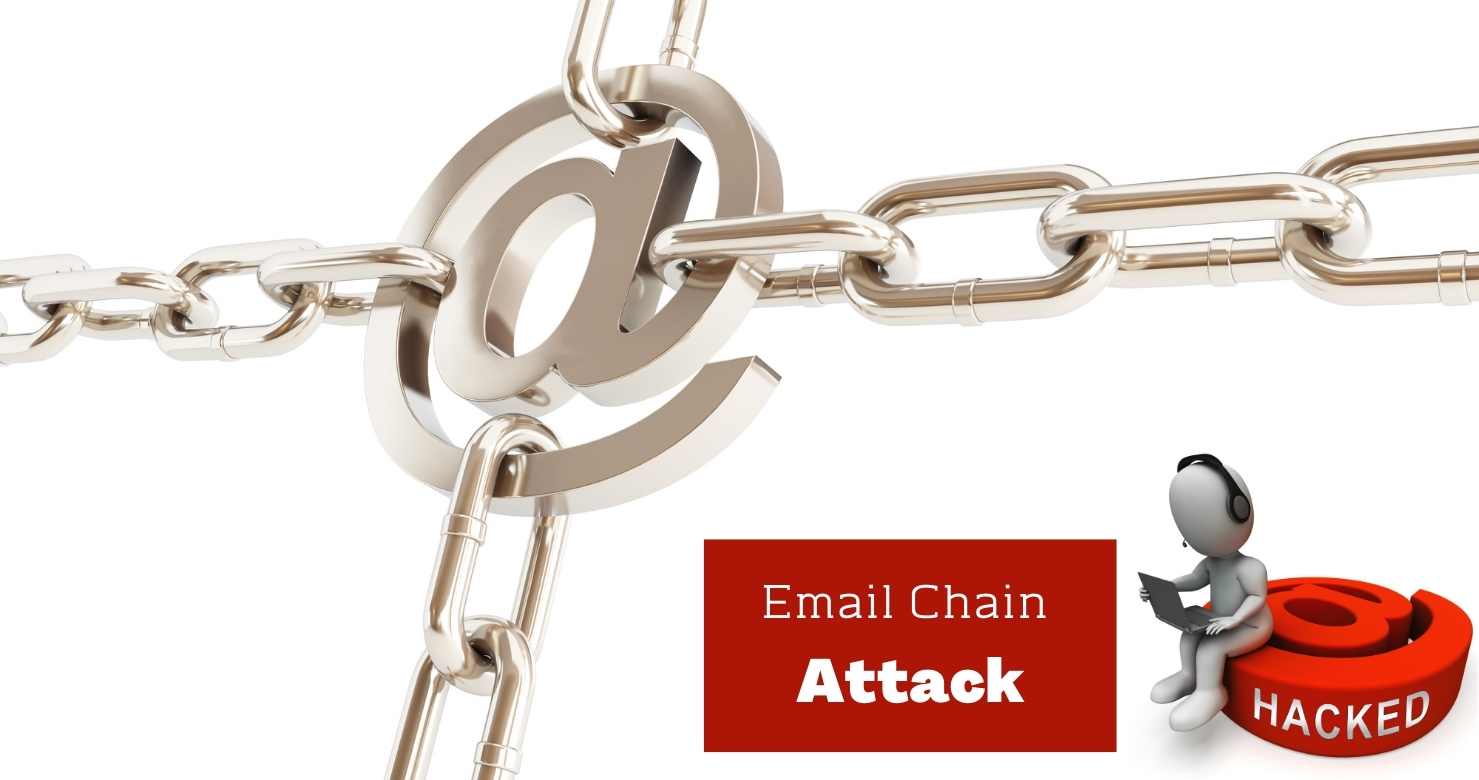
What is a Virus on a Computer? What Are Your Options for Self-Defence?
The computer virus is one of the most dangerous types of malwares. Viruses can corrupt your files, delete your data, and severely harm your machine. Computer viruses can also spread and infect other computers on their own. But, do computer viruses still pose a threat?
According to the AV-Test Institute, there are about 1.3 billion malware programmes in use as of 2022. Computer viruses are still a major concern, according to forecasts that they will account for 10% of all malware in 2022.
But what precisely is a computer virus? How did they get onto your computer or device in the first place? In the following essay, we’ll go over everything you need to know about computer viruses, including how to prevent infection and how to get rid of them.
What is a Virus on a Computer?
A computer virus is a sort of malware that can replicate itself. Consider a computer virus that is similar to the flu. The flu spreads from person to person, and once you’ve been infected, your body becomes sluggish and unable to function normally.
A computer infection is the same way. They’re made to cause chaos, damage infected devices, and impair their functionality. It’s essentially a programme or computer code that spreads across and inside devices. Viruses can propagate to other files and programmes on a device without the user’s permission.
Viruses can delete a few files or entirely take over your device, reformatting the operating system.
Viruses: How Do They Infect Your Computer?
Computer viruses can infect your computer in a number of different ways. However, some are more common than others. Here are a few of the most typical ways viruses get onto your computer.
- Spam attachments and emails
According to security experts, email is used to distribute 75 percent to 94 percent of all viruses. Opening an email attachment or, in certain situations, simply seeing the email can cause this. Viruses can potentially be sent in the email’s HTML body. As a result, several email providers block HTML until the sender is verified.
- Messages sent instantly
Viruses can also be propagated using instant messaging systems like Skype and Facebook Messenger. Sending an infected link in a chat message is the most prevalent way. Virus creators are well aware that people are more inclined to click on a link from someone they know.
- File-sharing applications
Viruses can also be propagated via Dropbox, SharePoint, and other file-sharing platforms. When a person uploads an infected file to a file-sharing account, the computer virus infects everyone who has access to that account. While Google Drive and other services analyse files for malware, they only do so for files under 25MB.
- Downloads of faux antivirus software
Cybercriminals employ pop-up adverts to fool people into thinking their computer is infected. To remove the threat, they demand that the consumer download their antivirus application. The antivirus download, on the other hand, is a forgery that infects the user’s computer with a virus. This only adds to the pain.
- Software with bugs
Unpatched software is software that hasn’t been updated in a long time. Developers frequently offer security updates to address software vulnerabilities, and it is critical to install these upgrades. These flaws are frequently used by cybercriminals to infect computers with viruses and other malware.
- Computer hardware
Viruses can be spread to your computer via USB drives and other detachable storage devices. While it isn’t as widespread as it once was, bad actors have been known to leave USB sticks infected with malware for unwitting victims. It’s not a smart idea to add hardware into your computer if you don’t know where it originated from.
Computer Viruses of 8 Types
Some computer viruses start replicating as soon as they reach your device, while others require a trigger to activate the virus code. The most prevalent types of viruses and how they spread are described below.
- Virus in the boot sector
A computer virus that infects the master boot record of a computer and commonly spreads via removable storage devices and media. It is difficult to remove and frequently necessitates reformatting the whole hard disc of infected machines.
- Overwrite virus
A computer virus that infects and destroys your files. The only way to get rid of it is to destroy all infected files, which will result in the loss of whatever data they contain. Overwrite viruses are most typically transmitted via email.
- Inhabitant virus
This type of computer virus infects the memory of the machine. If the original infection is removed, a copy may persist in the memory of the infected computer. When your operating system executes specific functions, it might then be activated. Antivirus software commonly misses these viruses because they reside in your RAM.
- Virus that infects files
Infected code is overwritten or inserted into executable files by a computer virus. When the virus infects a software, it overwrites or destroys it. Viruses that infect files can potentially move to the operating system of your computer or even reformat your hard disc.
- Macro-virus
A computer virus is coded in the same macro language as Microsoft Office products. They insert harmful code into these papers and data files, which starts running as soon as the files are opened. After that, the virus may infect all of the user’s documents, changing or rendering them illegible. If a user distributes an infected document, the virus spreads.
- Virus of web scripting
A virus that lurks in web page and browser code. Your device may become infected if you visit online pages that include such viruses in their code.
- Virus with several forms
The ability to exist in various forms is referred to as polymorphism. As a result, polymorphic viruses change their code and take on a new appearance each time the infected file or programme is run. This makes it easier for them to stay undetected.
- Viruses that are multipartite
A multipartite virus is made up of several different types. It infects several computer parts, including the operating system, files, and programmes, using various vectors.
What Are Computer Virus Symptoms?
Your computer may have a virus if you notice certain warning indicators. These are some of the most typical symptoms of a computer infection.
- Slow performance: A slowdown in the processing speed of the computer is usually a dead giveaway for computer viruses. Malicious code frequently uses up computing resources.
- Crashing and freezing of devices: System freezes and crashes are common symptoms of malware infection, although viruses can be expressly intended to do so. While this could indicate an older gadget, it also indicates an illness.
- Files missing: Another indication is persistent pop-ups regarding missing files. You may see notifications that shortcuts or files do not exist when you click them or try to access them. Viruses may be erasing your vital data.
- There are new files: When new files arise out of nowhere, be cautious. Computer viruses have the ability to erase existing files and replace them with new ones.
- System modifications that influence external hardware and accessories: Viruses have been known to trigger system changes that affect external hardware and accessories. It could be a symptom of a virus if you can’t get that USB disc or wireless mouse to connect or perform properly.
- The computer acts independently: A virus could be overriding your system if your device appears to be performing commands without your permission.
If one or more of these symptoms appear on your device, you must take action. Below, we’ll teach you how to accomplish it.
Virus Removal
There is one fundamental difference between dangerous computer code and the illness. Computer viruses, unlike the flu, have a treatment.
New computer viruses used to be notoriously difficult to eradicate. While harmful computer viruses and other malware have increased in number (estimates suggest 350,000 new malware programmes and apps are generated every day), the antivirus and cybersecurity industries have grown in response.
If your computer has a virus, there are various things you should do. If you have a PC or a Mac, the instructions will be different.
How to remove a virus from a Windows laptop or PC, step by step
If you believe you have a virus, follow these steps to get rid of it.
- Get a virus scanner.
You’ll need a good antivirus programme to catch and eliminate the latest virus threats. Bitdefender is a good choice for removing viruses from a Windows device and providing effective real-time security. Check out our list of the top free antivirus programmes if you don’t want to pay for a service.
Before moving on to the following stage, make sure you have your scanner downloaded.
- Turn off your internet connection
Because viruses might propagate via the internet, you should turn off your Wi-Fi or ethernet. You can concentrate entirely on the infected gadget this way.
- Switch to Safe Mode
Turn off your computer. Turn it back on, but keep pressing the F8 key as it starts up. You should choose Safe Mode with Networking from the Advanced Boot Options menu that appears.
- Use your Disk Clean-up tool to delete temporary files.
You can erase all of your temporary files using this tool. To locate it, go to your Start menu and select Programs > Accessories > System Tools > Disk Clean-up.
Select Temporary Files from the list of files to remove and delete them. You might catch the infection here, but you should surely move on to the following phase.
- Scan for viruses.
Start with your on-demand scanner and then go on to your real-time scanner. There are usually options for a quick scan and a comprehensive system scan. Start with a complete system scan. One of these apps will almost certainly detect and remove the infection. If the scans fail to eradicate the virus, you must manually delete it. You can do it yourself using Windows Registry, but it’s always safer to enlist the help of an IT professional.
- Check for new information.
After you’ve cleared the infection, make sure you update your Windows software. Microsoft distributes updates on a regular basis to keep your device safe from the latest threats. Simply select Update & Security from the Windows Start menu. You’ll find the most recent Windows updates there.
- Activate the firewall
Firewalls protect you from cyberattacks and viruses, and your new antivirus should have them enabled. To make sure it’s up to date, go to the Windows Start menu > Settings > Update & Security > Windows Security > Firewall and network protection.
How to remove a virus from a Mac, step by step
Although Macs aren’t as commonly targeted as PCs, they aren’t immune to attacks. Furthermore, Mac-specific malware may be considerably more difficult to detect than conventional malware. To remove malware from your Mac, follow these steps.
- Get an antivirus scanner for your Mac.
We recommend Avast Security for Macs. This scanner has considerably improved over time. It provides excellent virus and malware detection with minimal system impact. They have a fantastic virus clean-up application designed exclusively for Mac. If you have the time, read through our comprehensive guide to Mac antivirus software.
- Turn off your internet connection
You should disconnect from the internet since viruses can propagate through it. Unplug your ethernet wire or turn off your Wi-Fi router.
- Scan for viruses.
Your Mac-specific scanner should detect and remove any infections that are creating problems. Avast Security in particular. Try the next step if you want to manually locate and delete any files on your Mac.
- Open the Activity Monitor.
Use your Activity Monitor to manually locate the hacked app or programme. Look for unusual processes that aren’t related to the apps you normally use. When you’ve discovered the spyware, click Quit Process to close the Activity Monitor. Before closing the suspicious process in the Activity Monitor, you can double-check by Googling its name.
- Delete the spyware from your computer.
Open your Applications folder after exiting the Activity Monitor. The malware should then be moved to Trash and emptied.
- Check for new information.
Make sure your software and apps are current. Install any OS updates or Apple updates that are available.
- Activate the firewall
A firewall is usually included with modern antivirus software, or you can turn it on in your programme. However, go to System Preferences > Security & Privacy > Firewall to enable the Mac firewall.
How Can I Defend Against Computer Viruses?
Prevention is the best defence against computer infections. You can take a variety of steps to safeguard your computer and gadgets against computer viruses and other types of malware. Here are some helpful hints:
- Install an antivirus programme.
Make sure you install and update antivirus software from a trusted company. These scanners not only keep your device clean, but they also provide real-time protection. Antivirus software blocks questionable connections, alerts you about phishing sites, emails, and texts, and prevents dangerous injections.
Among the top antivirus programmes, we’ve tested are:
- McAfee Antivirus
- Kaspersky Antivirus
- Avira Antivirus
- Bitdefender Antivirus
- Update your PC and software.
Always install computer and software updates when they become available, whether they be for macOS, Windows, iOS, or Android. These updates frequently address security flaws in your operating system and software, which aid in the prevention of computer infections.
- Open questionable emails and attachments with caution.
Do not open questionable emails and delete or flag them as spam. You should also use an email service that scans all attachments before you open them.
- Install antivirus software.
Consider employing an anti-malware programme app in addition to antivirus software. These tools monitor your computer for viruses, spyware, and other malware on a regular basis. They also defend you against newer, more dangerous spyware, such as the BloodyStealer. Just make sure you’re getting authentic software from trusted sources like the Apple App Store, Microsoft Store, or Google Play.
- Set up a firewall
To assist block potential threats, a firewall monitors internet and network traffic. Strong firewalls will keep viruses and other malware off your computer. Most good antivirus solutions have built-in firewalls that are activated when they are installed. Microsoft and Mac computers both feature firewalls that have been upgraded over time; all you have to do is make sure they’re turned on.
- Change the privacy options on your browser and device.
Make sure your browser’s privacy settings are turned on and that you’re using a pop-up blocker. Many people prefer Chrome, but you can make Mozilla an anonymous browser with a few tweaks. You should also clear your cache and history on a regular basis. Change the privacy options on your browser and device.
Computer Viruses: How Common Are They?
Viruses are still a common type of malware that affects home computers. While ransomware has taken centre stage, computer viruses are thought to account for around 10% of all malware. Viruses, however, remain a major menace, with the AV-Test Institute reporting that 560,000 new pieces of malware are detected every day (and approximately 1 billion malware programmes exist).
Here are some statistics we found.
- Computer viruses have infected devices in about 30% of American households.
- According to Checkpoint, roughly 53 percent of computer viruses are propagated via.exe files, whereas only 6% are spread via.pdf files.
- Google’s Transparency Report claims that it has eliminated 2.1 million malware-infected websites. Malware was found on approximately 7% of all sites evaluated. Google discovers roughly 50 malware-infected websites every week.
- According to Statista, approximately 47% of PCs in China are infected with malware, making it the most infested country on the planet.
- According to Kaspersky, there will be roughly 56 million mobile malware infections in 2020. Android users are targeted far more frequently than iOS users.
Is Malware the Same as Computer Viruses?
Malware and virus are frequently used interchangeably. They do not, however, signify the same thing. Malware is a catch-all phrase for any malicious code or software, regardless of how it works. A virus is a type of malware that replicates itself across and within devices to spread. It’s frequently engineered to cause some sort of harm to the infected device.
Malware can refer to viruses as well as other types of malware such as killware, worms, and keyloggers. By 2022, ransomware and ransomware-as-a-service (RaaS) will have surpassed all other types of malware in terms of making headlines.
Conclusive Thoughts
In recent years, cybercriminals have increasingly employed viruses to attack corporations, healthcare organisations, and governments. These viruses can compromise data, disrupt operations, and destroy critical information.
Computer viruses continue to pose a significant cybersecurity risk to personal computer users. They can be incredibly destructive, frequently destroying data or causing major computer damage. As a result, computer users must be aware of the malware threat and take precautions to protect their devices from viruses.
Share This post!

What is a Virus on a Computer? What Are Your Options for Self-Defence?
The computer virus is one of the most dangerous types of malwares. Viruses can corrupt your files, delete your data, and severely harm your machine. Computer viruses can also spread and infect other computers on their own. But, do computer viruses still pose a threat?
According to the AV-Test Institute, there are about 1.3 billion malware programmes in use as of 2022. Computer viruses are still a major concern, according to forecasts that they will account for 10% of all malware in 2022.
But what precisely is a computer virus? How did they get onto your computer or device in the first place? In the following essay, we’ll go over everything you need to know about computer viruses, including how to prevent infection and how to get rid of them.
What is a Virus on a Computer?
A computer virus is a sort of malware that can replicate itself. Consider a computer virus that is similar to the flu. The flu spreads from person to person, and once you’ve been infected, your body becomes sluggish and unable to function normally.
A computer infection is the same way. They’re made to cause chaos, damage infected devices, and impair their functionality. It’s essentially a programme or computer code that spreads across and inside devices. Viruses can propagate to other files and programmes on a device without the user’s permission.
Viruses can delete a few files or entirely take over your device, reformatting the operating system.
Viruses: How Do They Infect Your Computer?
Computer viruses can infect your computer in a number of different ways. However, some are more common than others. Here are a few of the most typical ways viruses get onto your computer.
- Spam attachments and emails
According to security experts, email is used to distribute 75 percent to 94 percent of all viruses. Opening an email attachment or, in certain situations, simply seeing the email can cause this. Viruses can potentially be sent in the email’s HTML body. As a result, several email providers block HTML until the sender is verified.
- Messages sent instantly
Viruses can also be propagated using instant messaging systems like Skype and Facebook Messenger. Sending an infected link in a chat message is the most prevalent way. Virus creators are well aware that people are more inclined to click on a link from someone they know.
- File-sharing applications
Viruses can also be propagated via Dropbox, SharePoint, and other file-sharing platforms. When a person uploads an infected file to a file-sharing account, the computer virus infects everyone who has access to that account. While Google Drive and other services analyse files for malware, they only do so for files under 25MB.
- Downloads of faux antivirus software
Cybercriminals employ pop-up adverts to fool people into thinking their computer is infected. To remove the threat, they demand that the consumer download their antivirus application. The antivirus download, on the other hand, is a forgery that infects the user’s computer with a virus. This only adds to the pain.
- Software with bugs
Unpatched software is software that hasn’t been updated in a long time. Developers frequently offer security updates to address software vulnerabilities, and it is critical to install these upgrades. These flaws are frequently used by cybercriminals to infect computers with viruses and other malware.
- Computer hardware
Viruses can be spread to your computer via USB drives and other detachable storage devices. While it isn’t as widespread as it once was, bad actors have been known to leave USB sticks infected with malware for unwitting victims. It’s not a smart idea to add hardware into your computer if you don’t know where it originated from.
Computer Viruses of 8 Types
Some computer viruses start replicating as soon as they reach your device, while others require a trigger to activate the virus code. The most prevalent types of viruses and how they spread are described below.
- Virus in the boot sector
A computer virus that infects the master boot record of a computer and commonly spreads via removable storage devices and media. It is difficult to remove and frequently necessitates reformatting the whole hard disc of infected machines.
- Overwrite virus
A computer virus that infects and destroys your files. The only way to get rid of it is to destroy all infected files, which will result in the loss of whatever data they contain. Overwrite viruses are most typically transmitted via email.
- Inhabitant virus
This type of computer virus infects the memory of the machine. If the original infection is removed, a copy may persist in the memory of the infected computer. When your operating system executes specific functions, it might then be activated. Antivirus software commonly misses these viruses because they reside in your RAM.
- Virus that infects files
Infected code is overwritten or inserted into executable files by a computer virus. When the virus infects a software, it overwrites or destroys it. Viruses that infect files can potentially move to the operating system of your computer or even reformat your hard disc.
- Macro-virus
A computer virus is coded in the same macro language as Microsoft Office products. They insert harmful code into these papers and data files, which starts running as soon as the files are opened. After that, the virus may infect all of the user’s documents, changing or rendering them illegible. If a user distributes an infected document, the virus spreads.
- Virus of web scripting
A virus that lurks in web page and browser code. Your device may become infected if you visit online pages that include such viruses in their code.
- Virus with several forms
The ability to exist in various forms is referred to as polymorphism. As a result, polymorphic viruses change their code and take on a new appearance each time the infected file or programme is run. This makes it easier for them to stay undetected.
- Viruses that are multipartite
A multipartite virus is made up of several different types. It infects several computer parts, including the operating system, files, and programmes, using various vectors.
What Are Computer Virus Symptoms?
Your computer may have a virus if you notice certain warning indicators. These are some of the most typical symptoms of a computer infection.
- Slow performance: A slowdown in the processing speed of the computer is usually a dead giveaway for computer viruses. Malicious code frequently uses up computing resources.
- Crashing and freezing of devices: System freezes and crashes are common symptoms of malware infection, although viruses can be expressly intended to do so. While this could indicate an older gadget, it also indicates an illness.
- Files missing: Another indication is persistent pop-ups regarding missing files. You may see notifications that shortcuts or files do not exist when you click them or try to access them. Viruses may be erasing your vital data.
- There are new files: When new files arise out of nowhere, be cautious. Computer viruses have the ability to erase existing files and replace them with new ones.
- System modifications that influence external hardware and accessories: Viruses have been known to trigger system changes that affect external hardware and accessories. It could be a symptom of a virus if you can’t get that USB disc or wireless mouse to connect or perform properly.
- The computer acts independently: A virus could be overriding your system if your device appears to be performing commands without your permission.
If one or more of these symptoms appear on your device, you must take action. Below, we’ll teach you how to accomplish it.
Virus Removal
There is one fundamental difference between dangerous computer code and the illness. Computer viruses, unlike the flu, have a treatment.
New computer viruses used to be notoriously difficult to eradicate. While harmful computer viruses and other malware have increased in number (estimates suggest 350,000 new malware programmes and apps are generated every day), the antivirus and cybersecurity industries have grown in response.
If your computer has a virus, there are various things you should do. If you have a PC or a Mac, the instructions will be different.
How to remove a virus from a Windows laptop or PC, step by step
If you believe you have a virus, follow these steps to get rid of it.
- Get a virus scanner.
You’ll need a good antivirus programme to catch and eliminate the latest virus threats. Bitdefender is a good choice for removing viruses from a Windows device and providing effective real-time security. Check out our list of the top free antivirus programmes if you don’t want to pay for a service.
Before moving on to the following stage, make sure you have your scanner downloaded.
- Turn off your internet connection
Because viruses might propagate via the internet, you should turn off your Wi-Fi or ethernet. You can concentrate entirely on the infected gadget this way.
- Switch to Safe Mode
Turn off your computer. Turn it back on, but keep pressing the F8 key as it starts up. You should choose Safe Mode with Networking from the Advanced Boot Options menu that appears.
- Use your Disk Clean-up tool to delete temporary files.
You can erase all of your temporary files using this tool. To locate it, go to your Start menu and select Programs > Accessories > System Tools > Disk Clean-up.
Select Temporary Files from the list of files to remove and delete them. You might catch the infection here, but you should surely move on to the following phase.
- Scan for viruses.
Start with your on-demand scanner and then go on to your real-time scanner. There are usually options for a quick scan and a comprehensive system scan. Start with a complete system scan. One of these apps will almost certainly detect and remove the infection. If the scans fail to eradicate the virus, you must manually delete it. You can do it yourself using Windows Registry, but it’s always safer to enlist the help of an IT professional.
- Check for new information.
After you’ve cleared the infection, make sure you update your Windows software. Microsoft distributes updates on a regular basis to keep your device safe from the latest threats. Simply select Update & Security from the Windows Start menu. You’ll find the most recent Windows updates there.
- Activate the firewall
Firewalls protect you from cyberattacks and viruses, and your new antivirus should have them enabled. To make sure it’s up to date, go to the Windows Start menu > Settings > Update & Security > Windows Security > Firewall and network protection.
How to remove a virus from a Mac, step by step
Although Macs aren’t as commonly targeted as PCs, they aren’t immune to attacks. Furthermore, Mac-specific malware may be considerably more difficult to detect than conventional malware. To remove malware from your Mac, follow these steps.
- Get an antivirus scanner for your Mac.
We recommend Avast Security for Macs. This scanner has considerably improved over time. It provides excellent virus and malware detection with minimal system impact. They have a fantastic virus clean-up application designed exclusively for Mac. If you have the time, read through our comprehensive guide to Mac antivirus software.
- Turn off your internet connection
You should disconnect from the internet since viruses can propagate through it. Unplug your ethernet wire or turn off your Wi-Fi router.
- Scan for viruses.
Your Mac-specific scanner should detect and remove any infections that are creating problems. Avast Security in particular. Try the next step if you want to manually locate and delete any files on your Mac.
- Open the Activity Monitor.
Use your Activity Monitor to manually locate the hacked app or programme. Look for unusual processes that aren’t related to the apps you normally use. When you’ve discovered the spyware, click Quit Process to close the Activity Monitor. Before closing the suspicious process in the Activity Monitor, you can double-check by Googling its name.
- Delete the spyware from your computer.
Open your Applications folder after exiting the Activity Monitor. The malware should then be moved to Trash and emptied.
- Check for new information.
Make sure your software and apps are current. Install any OS updates or Apple updates that are available.
- Activate the firewall
A firewall is usually included with modern antivirus software, or you can turn it on in your programme. However, go to System Preferences > Security & Privacy > Firewall to enable the Mac firewall.
How Can I Defend Against Computer Viruses?
Prevention is the best defence against computer infections. You can take a variety of steps to safeguard your computer and gadgets against computer viruses and other types of malware. Here are some helpful hints:
- Install an antivirus programme.
Make sure you install and update antivirus software from a trusted company. These scanners not only keep your device clean, but they also provide real-time protection. Antivirus software blocks questionable connections, alerts you about phishing sites, emails, and texts, and prevents dangerous injections.
Among the top antivirus programmes, we’ve tested are:
- McAfee Antivirus
- Kaspersky Antivirus
- Avira Antivirus
- Bitdefender Antivirus
- Update your PC and software.
Always install computer and software updates when they become available, whether they be for macOS, Windows, iOS, or Android. These updates frequently address security flaws in your operating system and software, which aid in the prevention of computer infections.
- Open questionable emails and attachments with caution.
Do not open questionable emails and delete or flag them as spam. You should also use an email service that scans all attachments before you open them.
- Install antivirus software.
Consider employing an anti-malware programme app in addition to antivirus software. These tools monitor your computer for viruses, spyware, and other malware on a regular basis. They also defend you against newer, more dangerous spyware, such as the BloodyStealer. Just make sure you’re getting authentic software from trusted sources like the Apple App Store, Microsoft Store, or Google Play.
- Set up a firewall
To assist block potential threats, a firewall monitors internet and network traffic. Strong firewalls will keep viruses and other malware off your computer. Most good antivirus solutions have built-in firewalls that are activated when they are installed. Microsoft and Mac computers both feature firewalls that have been upgraded over time; all you have to do is make sure they’re turned on.
- Change the privacy options on your browser and device.
Make sure your browser’s privacy settings are turned on and that you’re using a pop-up blocker. Many people prefer Chrome, but you can make Mozilla an anonymous browser with a few tweaks. You should also clear your cache and history on a regular basis. Change the privacy options on your browser and device.
Computer Viruses: How Common Are They?
Viruses are still a common type of malware that affects home computers. While ransomware has taken centre stage, computer viruses are thought to account for around 10% of all malware. Viruses, however, remain a major menace, with the AV-Test Institute reporting that 560,000 new pieces of malware are detected every day (and approximately 1 billion malware programmes exist).
Here are some statistics we found.
- Computer viruses have infected devices in about 30% of American households.
- According to Checkpoint, roughly 53 percent of computer viruses are propagated via.exe files, whereas only 6% are spread via.pdf files.
- Google’s Transparency Report claims that it has eliminated 2.1 million malware-infected websites. Malware was found on approximately 7% of all sites evaluated. Google discovers roughly 50 malware-infected websites every week.
- According to Statista, approximately 47% of PCs in China are infected with malware, making it the most infested country on the planet.
- According to Kaspersky, there will be roughly 56 million mobile malware infections in 2020. Android users are targeted far more frequently than iOS users.
Is Malware the Same as Computer Viruses?
Malware and virus are frequently used interchangeably. They do not, however, signify the same thing. Malware is a catch-all phrase for any malicious code or software, regardless of how it works. A virus is a type of malware that replicates itself across and within devices to spread. It’s frequently engineered to cause some sort of harm to the infected device.
Malware can refer to viruses as well as other types of malware such as killware, worms, and keyloggers. By 2022, ransomware and ransomware-as-a-service (RaaS) will have surpassed all other types of malware in terms of making headlines.
Conclusive Thoughts
In recent years, cybercriminals have increasingly employed viruses to attack corporations, healthcare organisations, and governments. These viruses can compromise data, disrupt operations, and destroy critical information.
Computer viruses continue to pose a significant cybersecurity risk to personal computer users. They can be incredibly destructive, frequently destroying data or causing major computer damage. As a result, computer users must be aware of the malware threat and take precautions to protect their devices from viruses.





